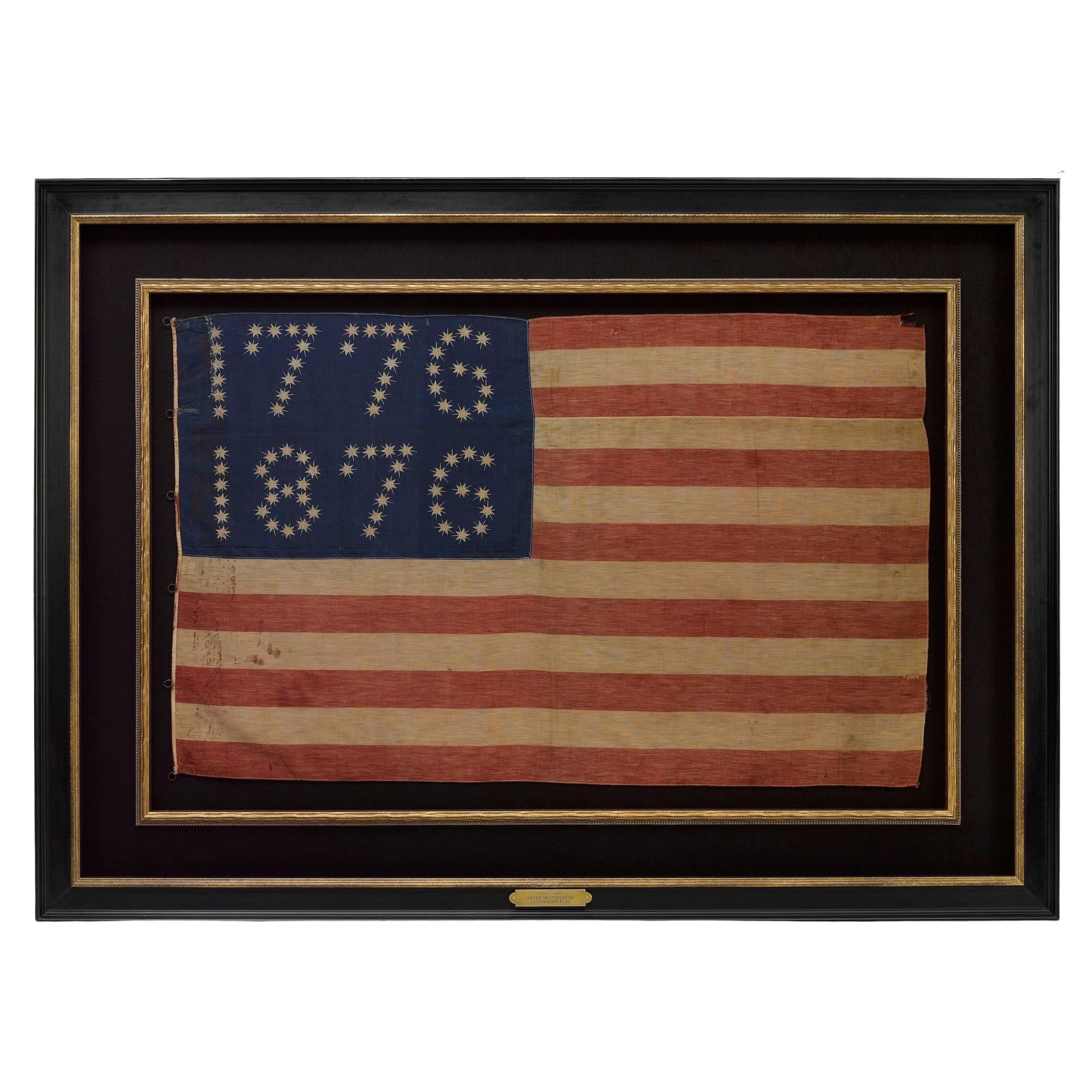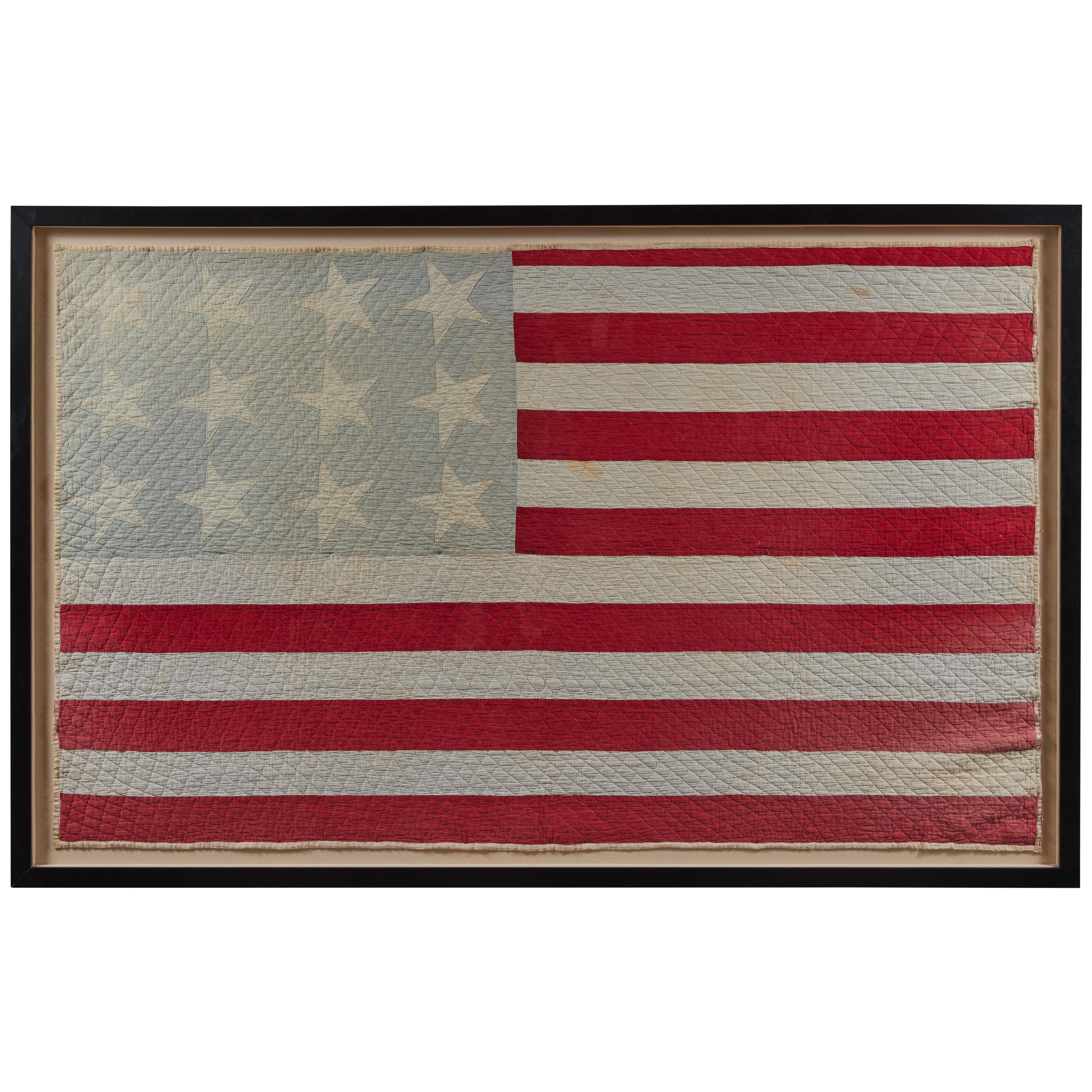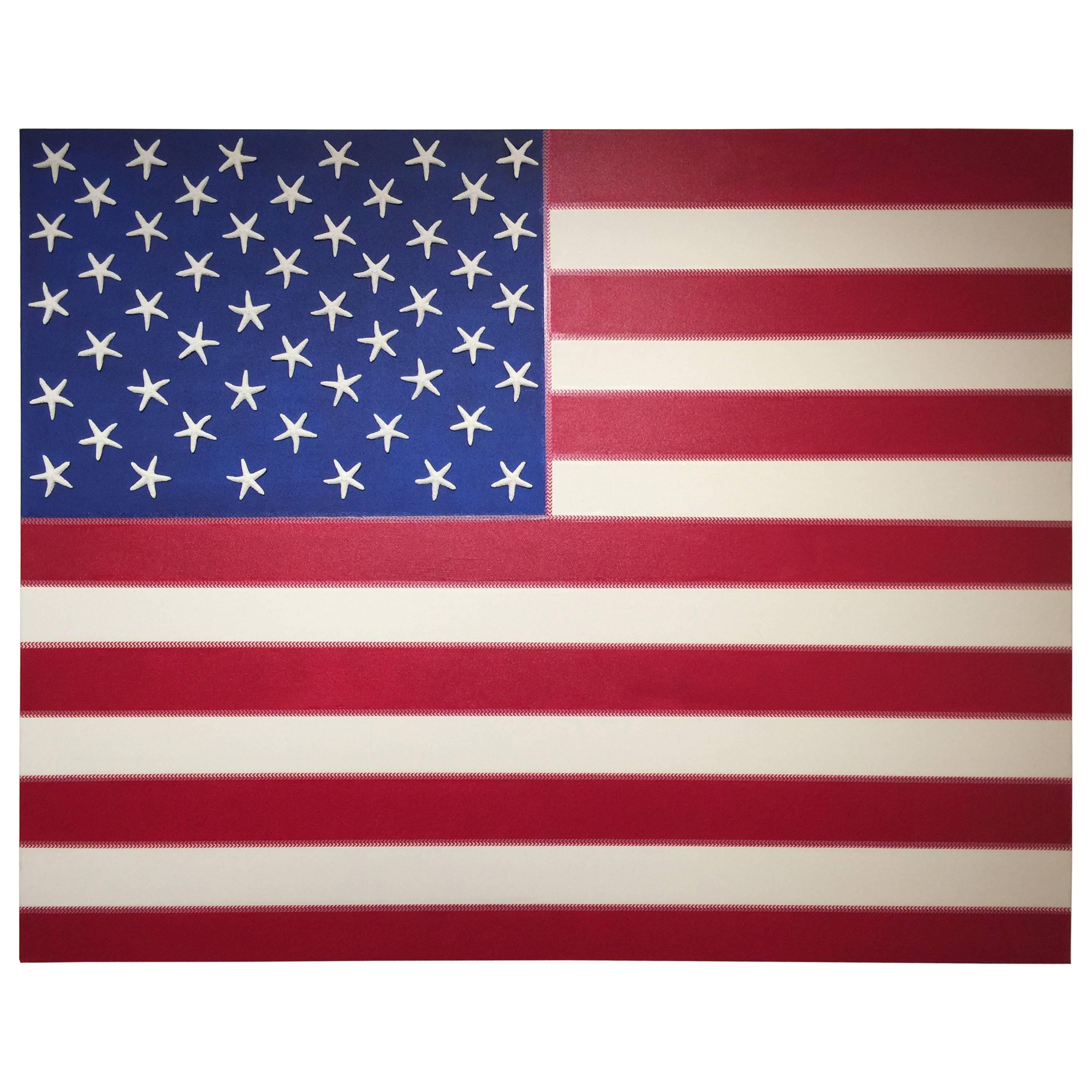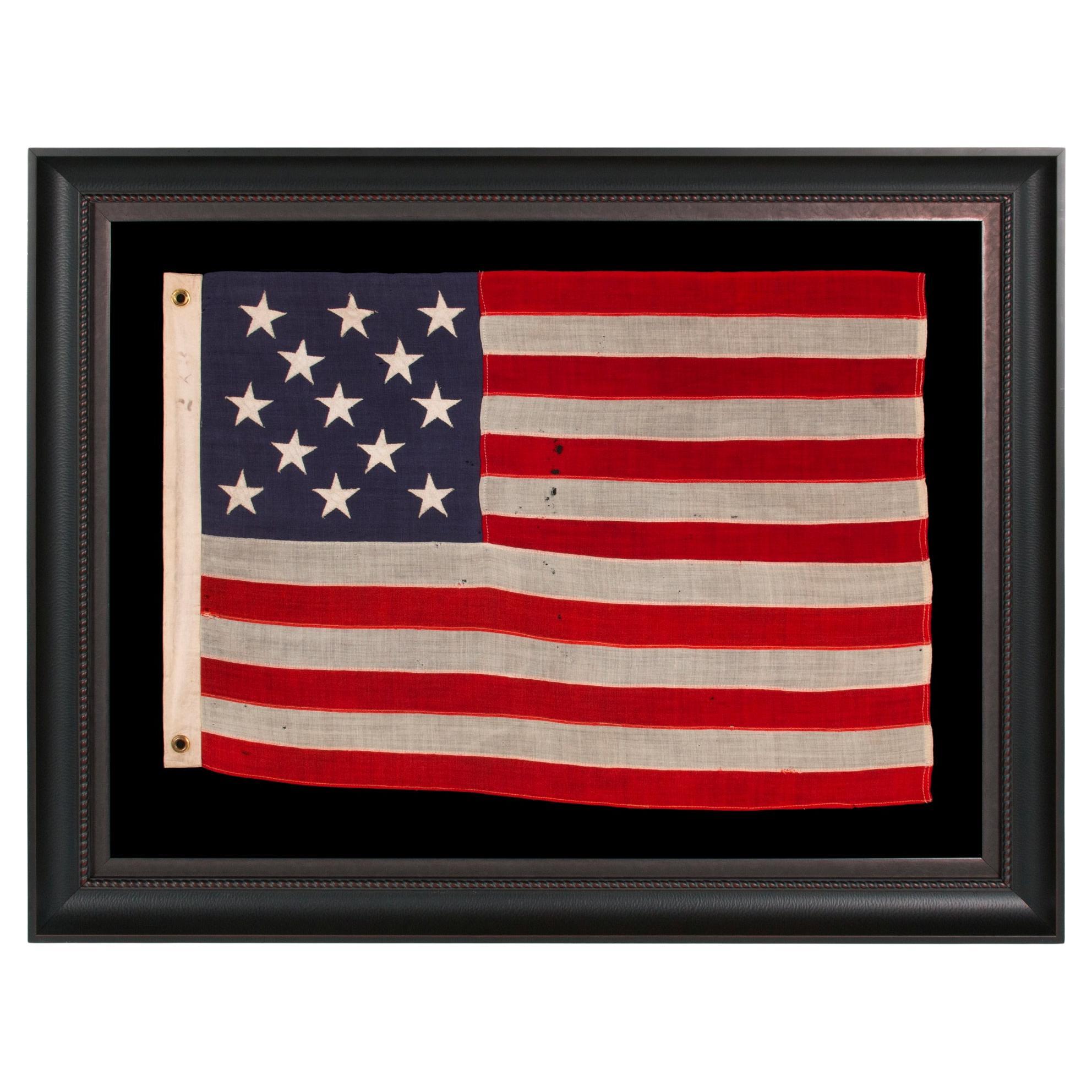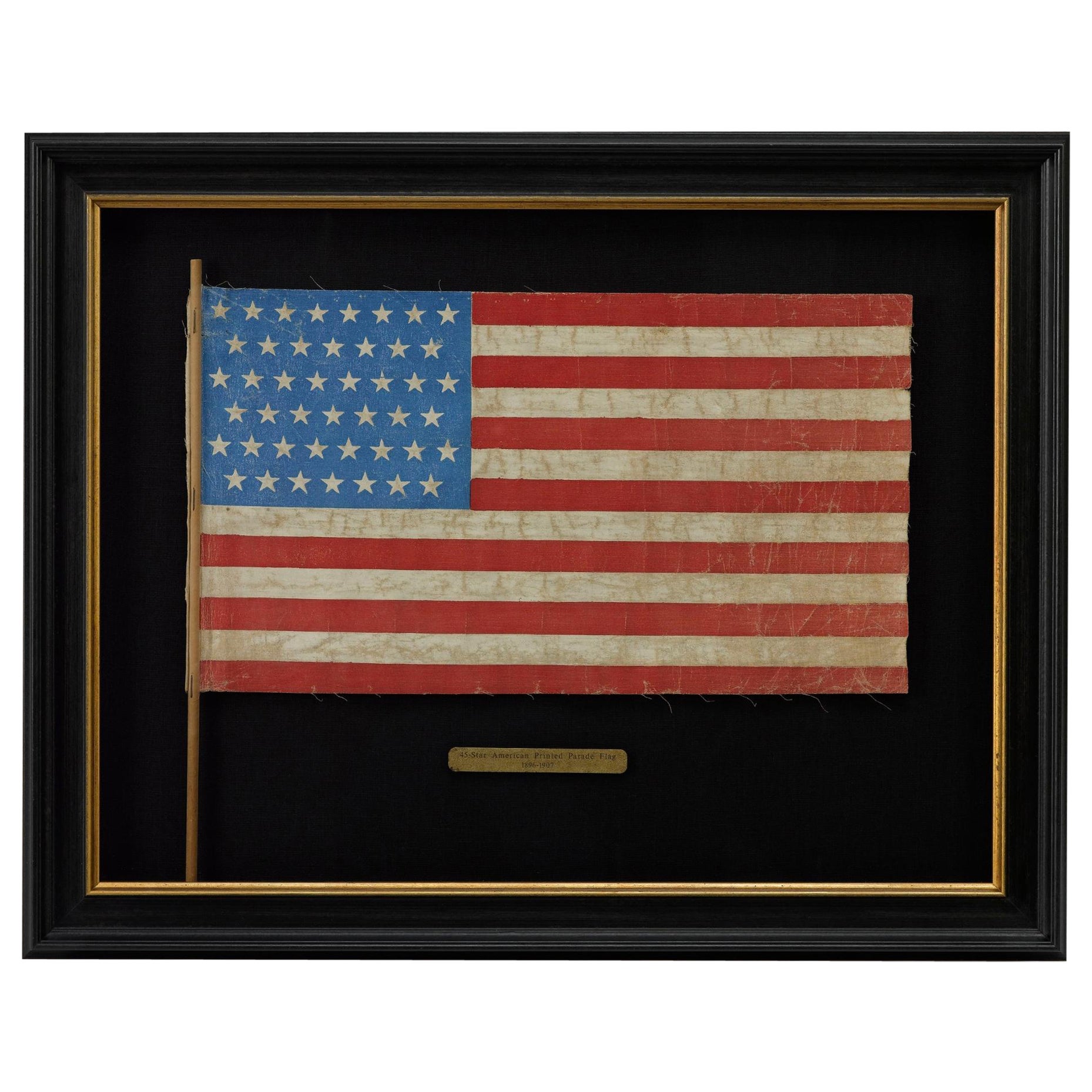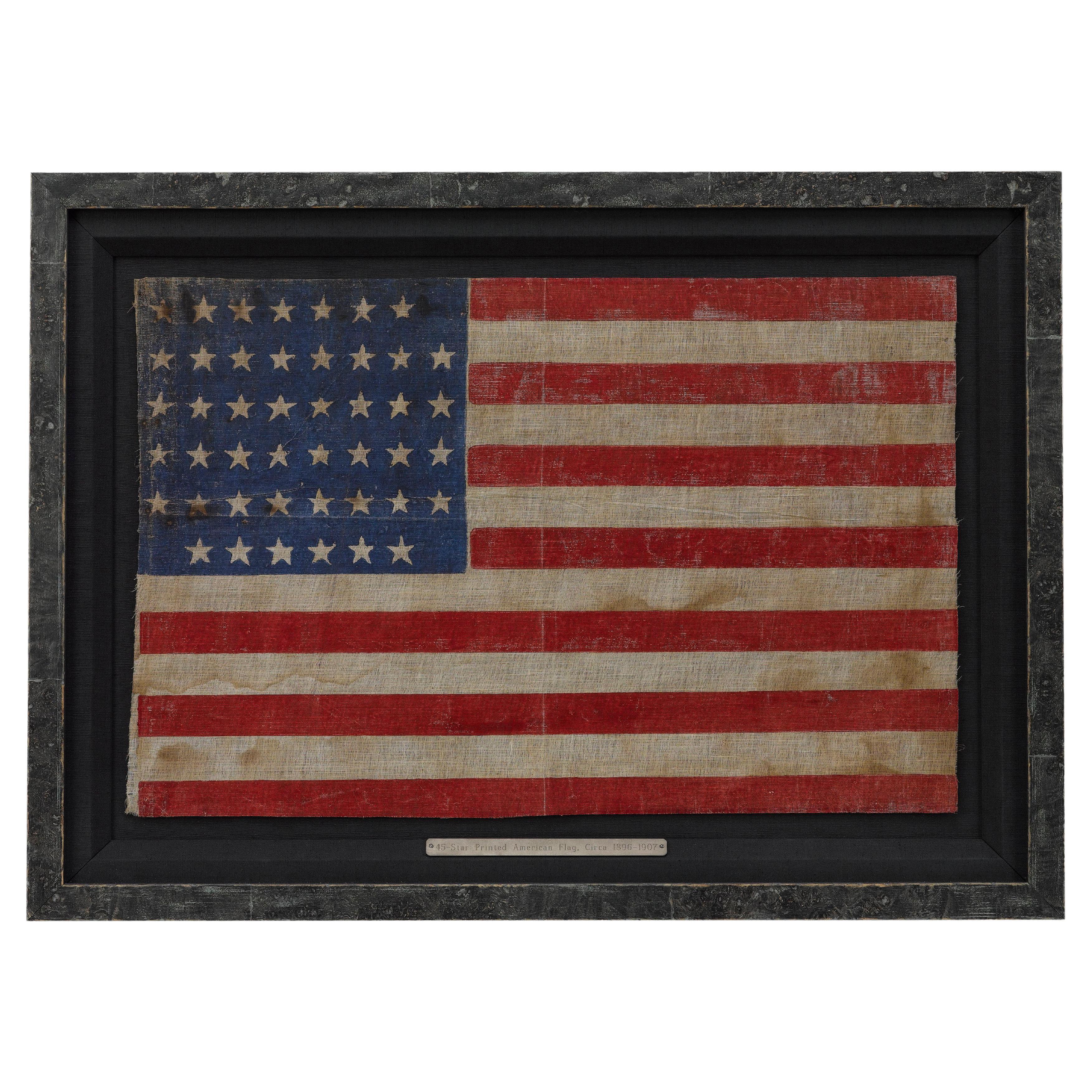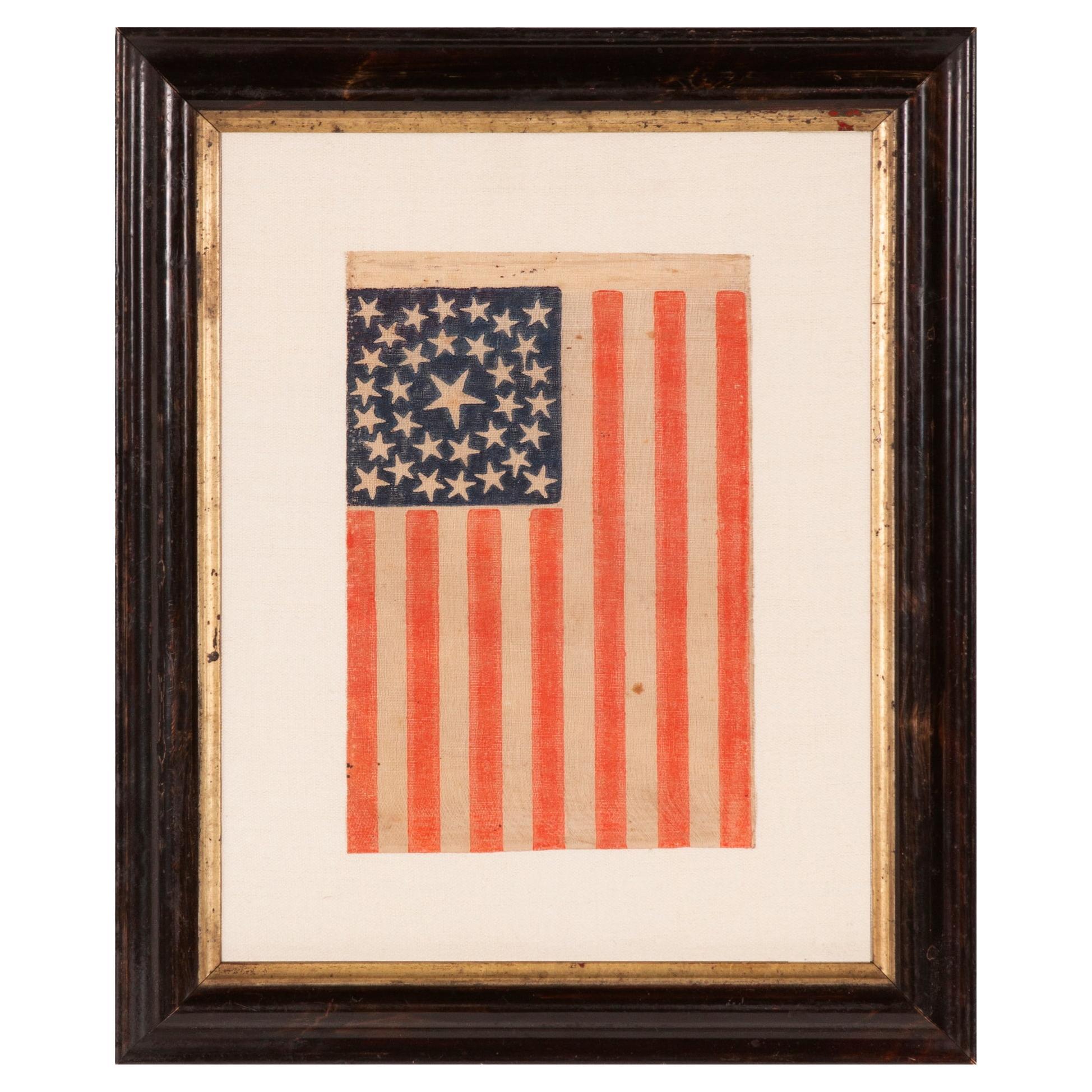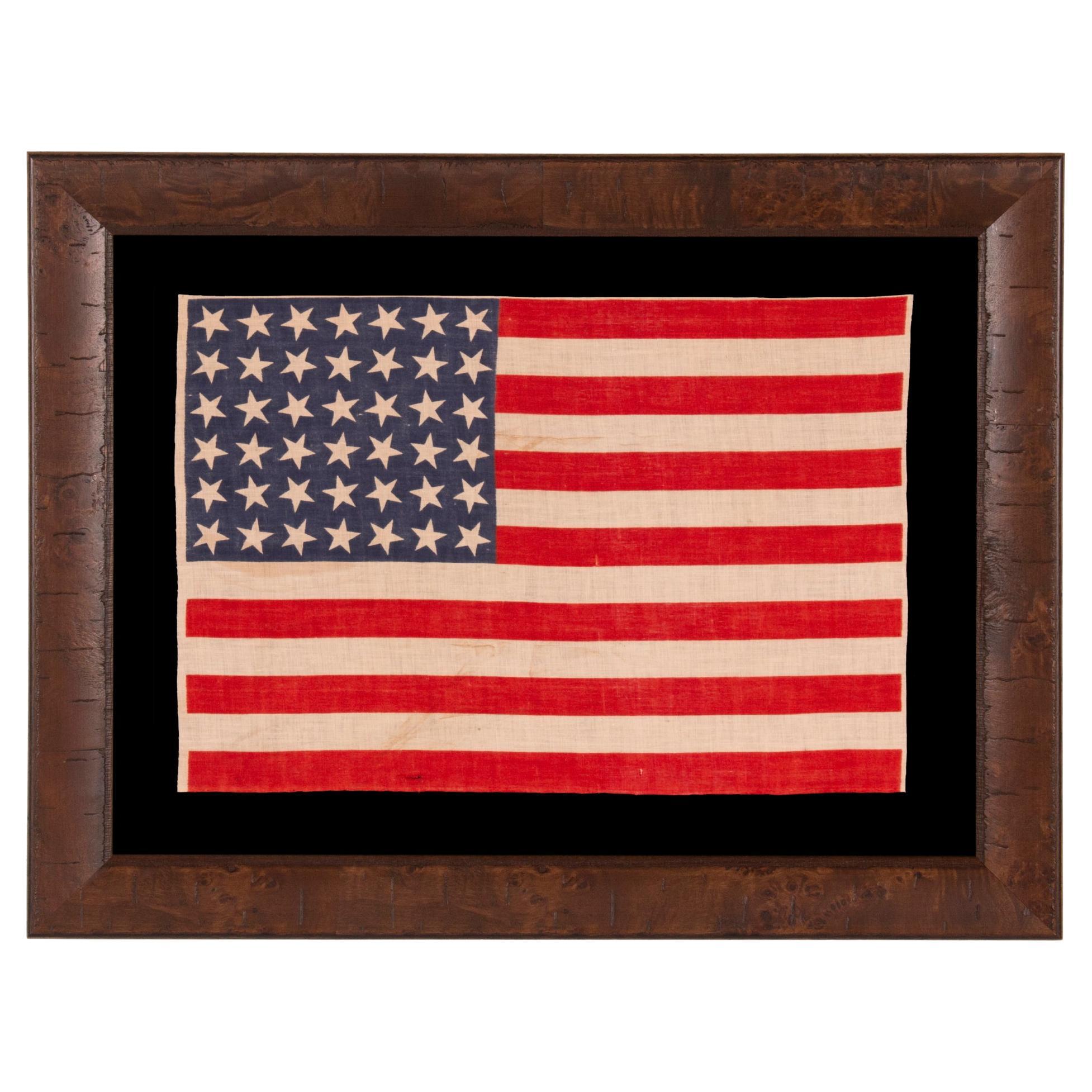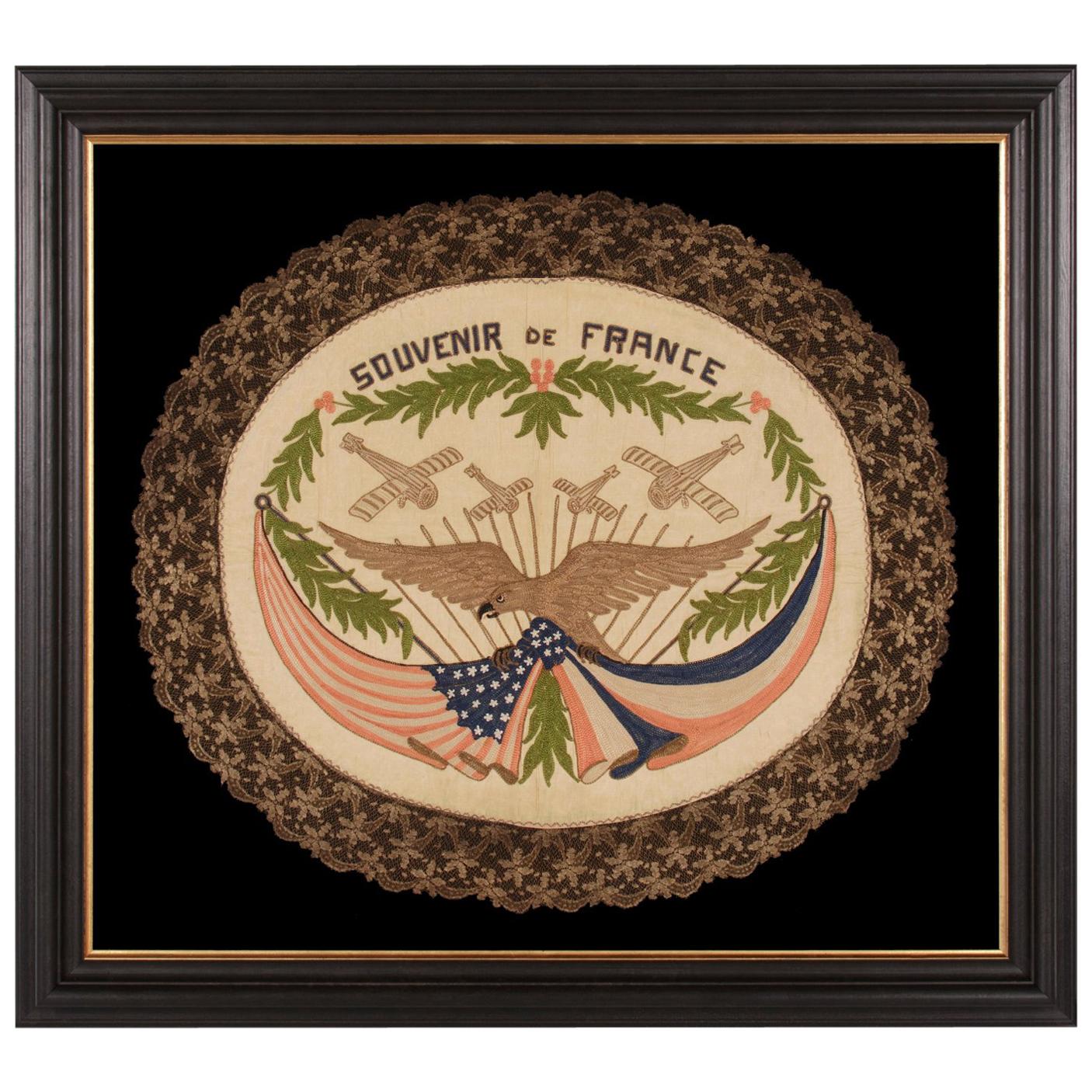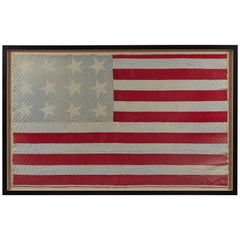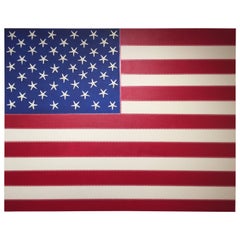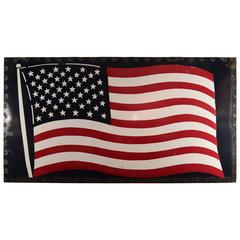
Huge Enamel American Flag
View Similar Items
1 of 5
Huge Enamel American Flag
About the Item
- Dimensions:Height: 57 in (144.78 cm)Width: 108 in (274.32 cm)Depth: 3 in (7.62 cm)
- Materials and Techniques:
- Place of Origin:
- Period:
- Date of Manufacture:Unknown
- Condition:Wear consistent with age and use.
- Seller Location:Seattle, WA
- Reference Number:Seller: 30461stDibs: LU86607438233
You May Also Like
- Centennial Celebration "1776-1876" American Flag BannerLocated in Colorado Springs, COPresented is a rare Centennial patriotic flag banner, dating to 1876. The flag’s rich blue canton is spectacular, with 81 five-pointed, rayed stars printed in white and arranged to read “1776” and “1876.” The flag’s design is completed with thirteen alternating red and white stripes. The fly is a two-piece, machine sewn construction. The hoist to this large wool flag has five brass rings, original to 1876. In the lead up to the nation’s Centennial in 1876, flag makers and individuals looked to the past for designs to produce as part of the country’s many celebrations. Popular interpretation of the stars and stripes undoubtedly reached its climax of variety and originality at the time of our Nation’s first Centennial. Since no design restrictions were placed on flagmaker’s imaginations and no strict distinctions were drawn between official and unofficial star counts, it is no surprise that, on the occasion of the Centennial, creativity in flag design was not the exception, but the rule. The cantons from this period presented an array of geometric abstractions. Great star patterns, referred to as the “starry flower of Liberty” by Oliver Wendell Holmes, that were popular from 1818...Category
Antique 1870s American Political and Patriotic Memorabilia
MaterialsWool
- Large Framed American Flag Folk Art QuiltLocated in Santa Monica, CANicely faded American flag quilt. Excellent hand stitched dancing Folk Art stars. Skilled quilting, a nice graphic large-scale wall hanging. White ...Category
Early 20th Century North American Folk Art Political and Patriotic Memor...
MaterialsCotton
- J. WOHNSEIDLER American Flag No. 1, 2017 Acrylic on CanvasLocated in New York, NYAmerican Flag No. 1 by J. Wohnseidler. Arcylic on canvas with hand-applied starfish. Unframed. Signed/titled/dated by artist on back. Measures: 48 inches L x 36 inches H x 1.5 inches D.Category
2010s American Contemporary Art
MaterialsCanvas, Acrylic
- 13 Star Antique American Flag, ca 1895-1926Located in York County, PA13 STAR ANTIQUE AMERICAN FLAG WITH A 3-2-3-2-3 CONFIGURATION OF STARS ON AN INDIGO CANTON, SQUARISH PROPORTIONS, AND A BEAUTIFUL OVERALL PRESENTATION, MADE circa 1895-1926 This 13 s...Category
Antique Late 19th Century American Political and Patriotic Memorabilia
MaterialsWool
Price Upon Request - 45-Star American Printed Parade Flag, 1896-1907Located in Colorado Springs, COThis 45-star United States flag celebrates the statehood of Utah. 45-star flags served as the official American flag from 1896-1908. This particular flag was flown as a parade flag, ...Category
Antique Early 1900s American Political and Patriotic Memorabilia
MaterialsFabric
- 46-Star American Flag Printed in Drum Star ConfigurationLocated in Colorado Springs, COThis is an original 46-Star American parade flag, celebrating Oklahoma statehood. Each star on the flag's canton represents a state in the Union at the time. The official flag design would update every July 4th, to include any new states added to the Union in the past year. Oklahoma, the 46th state, entered the Union on November 16, 1907. As such, this 46–star flag was the official flag of the United States from July 4, 1908, until July 4, 1912. The silk flag has a dark blue canton with 46 white printed stars. The stars are printed in an 7-8-8-8-8-7 row configuration, or “Drum design.” The flag design is completed with 13 alternating red and white stripes, each stripe representing one of the original thirteen colonies. The land that comprises Oklahoma today was added to the United States as part of the Louisiana Purchase of 1803. Throughout the 19th century, the U.S. government relocated Indian tribes from the southeastern United States to the area, and by 1900, over 30 Indian tribes had been moved to what was originally called the Indian Territories. At the same time, ranchers in Texas began to move into the area in search of new pasture lands. Although stipulations in the Indian Relocation Act agreed that the land would forever be Indian Territory, the promise of fertile farmland trumped the government’s promise of sovereignty. On April 22, 1889, they opened the land to settlement by homesteaders, creating a land run in which settlers, called “Boomers,” were allowed to cross the Texas or Arkansas border at a particular hour to claim homesteads. Settlers who illegally crossed the border earlier to stake prime land were called “sooners,” which eventually became the state’s nickname. Wagons and the Santa Fe railroad carried cartloads of men and women to blank town sites and building plots, creating ten thousand-people communities in a matter of days. The following year, the region was further divided into Indian Territory and Oklahoma Territory...Category
Vintage 1910s American Political and Patriotic Memorabilia
MaterialsSilk
